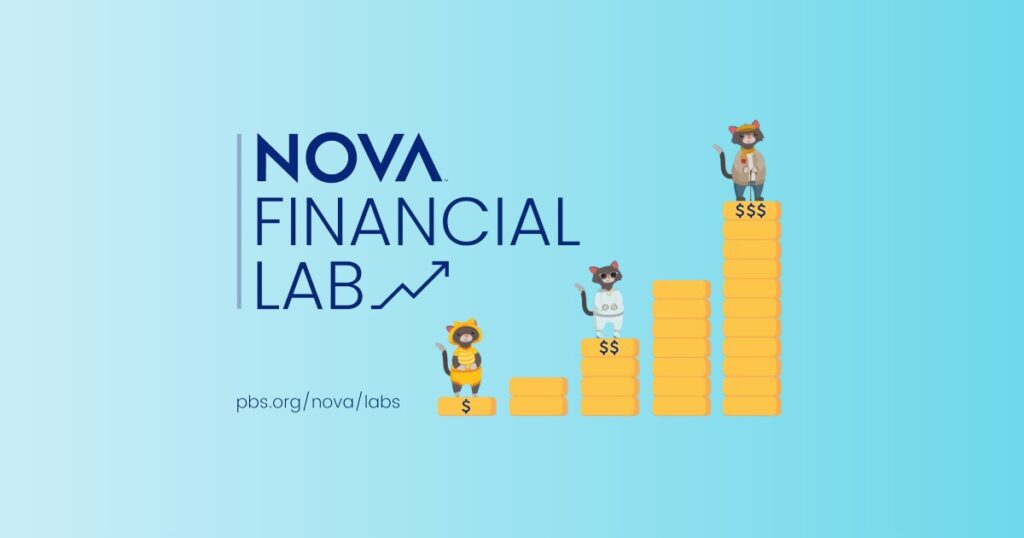
Grades 9-12

Don't have an account yet? Sign up for free
Don't have an account yet? Sign up for free

A Roof of Your Own
 Homeownership is part of the American dream. But for some people, the cost of homeownership seems more like an American nightmare. Buying a home usually is the largest financial commitment that a person or family ever makes. Buying a home for the first time can be particularly intimidating.
Homeownership is part of the American dream. But for some people, the cost of homeownership seems more like an American nightmare. Buying a home usually is the largest financial commitment that a person or family ever makes. Buying a home for the first time can be particularly intimidating.
Buying a home, however, is easier and more affordable than you may think. The keys are understanding the procedures and processes of homeownership and developing the skills to reduce the costs of homeownership.
In this activity, you'll see that there are many programs that help consumers buy a first home. Although some of these programs reduce initial costs, they can raise long-term costs. Next you'll analyze the economic factors that influence the costs of homeownership. Finally, you will use a mortgage calculator to master the basics of comparing the costs of mortgages. This is important because the cost of the mortgage is the largest cost of homeownership. Understanding the components of mortgage costs and comparing those costs among several lenders can save you thousands of dollars. Let's get started.
In this activity, you'll see that there are many programs that help consumers buy a first home. Although some of these programs reduce initial costs, they can raise long-term costs. Next you'll analyze the economic factors that influence the costs of home ownership. Finally, you will use a mortgage calculator to master the basics of comparing the costs of mortgages. This is important because the cost of the mortgage is the largest cost of home ownership. Understanding the components of mortgage costs and comparing those costs among several lenders can save you thousands of dollars. Let's get started.
Read On the Brink. This article on the costs of first-time home-buyers appeared in The Wall Street Journal Classroom Edition in February 1999.
After reading the article, answer the following questions.
Now let's examine the economic factors that influence home sales. You will examine the data in six charts. The scale for the data on these charts is on the left vertical axis. The horizontal axis tracks these data over the past 29 years. The light blue shaded areas represent economic recessions in the United States. The economic factors that you will examine are the following:
Median Household Income. This is the middle level of income. To obtain this number, line up all household incomes in declining order and move down to 50 percent.
Median New-Home Prices. Use the same techniques you used for determining median household income. This is the middle level of the price of new homes.
Interest Rates. This chart shows the average interest rate on existing homes for each year.
Affordability Index. This chart relates median income to home costs. For example, if incomes rise and interest rates fall, homes become more affordable.
New-Home Sales. This chart shows the number of new homes sold each year and the number of homes still for sale at the end of the year.
Demographics. On this chart, the red line shows the number of people aged 25 to 34, the age when many people start buying homes. The blue line shows the number of people aged 60-69, the age when many people start selling their homes and moving to smaller apartments or condominiums.
Before analyzing the data in the charts, please read the longer descriptions, which accompany the charts. Now, click here to review the charts.
First let's answer some factual questions.
Now let's analyze the data and see what conclusions we can draw.
Now it's time to shop for a mortgage. There are three keys to reducing mortgage costs. First, the larger the down payment, the lower the principal of the loan. If you borrow less, you will pay less interest, which is the cost of the loan. Second, the lower the annual interest rate, the less interest you will pay. The annual interest rate is the percentage of the loan (principal) that you pay in interest each year. Your total payment minus the principal equals the total dollar amount of interest you will pay for the loan. Finally, the faster you pay off the loan, the less interest you will pay.
Let's analyze four different mortgages with different down payments,annual interest rates, and time periods. All of the home buyers are buying a $125,000 house.
These four mortgages are compared in the chart below. Notice that the monthly payment and total payment (principal plus interest) are blank.
You will fill these in, using the mortgage calculator.
|
|
Mortgage 1 |
Mortgage 2 |
Mortgage 3 |
Mortgage 4 |
|
Home price |
$125,000 |
$125,000 |
$125,000 |
$125,000 |
|
Percentage down |
20% |
5% |
20% |
20% |
|
Total down payment |
25,000 |
6,250 |
25,000 |
25,000 |
|
Initial principal |
100,000 |
118,750 |
100,000 |
100,000 |
|
Annual interest rate |
7% |
7% |
6% |
6.5% |
|
Term |
30 years |
30 years |
30 years |
15 years |
|
Monthly payment |
|
|
|
|
|
Total payment |
|
|
|
|
Using a mortgage calculator is easy. Just plug in the initial principle,
annual interest rate, and term (in years) for each of the four mortgages. Check monthly payment amounts and total payments. Now go to the https://www.mortgagecalculator.org/ and fill in the rest of the chart.
Based on your chart, answer these questions.
Your Housing IQ
Check your Home-buyer IQ Score:
|
9 – 10 |
Home-buying genius |
|
7-8 |
Very smart home buyer |
|
5-6 |
Home maintenance needed |
|
3-4 |
Have you considered renting? |
|
0-2 |
Live in your car |
How does median income affect home sales? Home prices?
Explain the relationship between interest rates and:
A. The affordability index.
B. The prices of new homes.
C. New homes sold.
Why do interest rates have this effect on home sales?
How do recessions affect home sales? Why?
Why did both the number of new homes sold and the prices of new homes sold rise in 1996 and 1997?
Compare the number of 25-34-year-olds with the number of 60-69-year-olds in 1989. How will this ratio change in the 2020s? How do you think these changing ratios will affect the housing market?
Kyle and Amber Campbell pay 20 percent down and take out a $100,000 mortgage. It is a 30-year fixed-rate mortgage with an annual interest rate of seven percent.
James and Linda Snyder qualify for a special down payment of only five percent. They take out a $118,850 mortgage. It is a 30-year fixed-rate mortgage with an annual interest rate of seven percent.
Benny and Silvia Ramirez qualify for a special program that lowers their fixed annual interest rate to six percent. They make a 20 percent down payment and borrow $100,000 for 30 years.
Jill Baldwin knows that paying off a mortgage more quickly will save her money. She makes a down payment of 20 percent and borrows $100,000 at a fixed rate of 6.5 percent. Because she will pay off the mortgage in 15 years, her annual interest rate is lower than she would have paid for a 30-year mortgage.
What happens to the monthly payment and total payment for a loan with a smaller down payment?
What happens to the monthly payment and total payment for a loan with a lower annual interest rate?
What happens to the monthly payment and total payment if the term of the mortgage is 15 years rather than 30 years?
What is the trade-off if you get a 15-year mortgage rather than a 30-year mortgage?
How can you reduce your cost of buying a home?

Grades 9-12

Grades 9-12

Grades 9-12

Content Partner
Grades 6-8, 9-12
